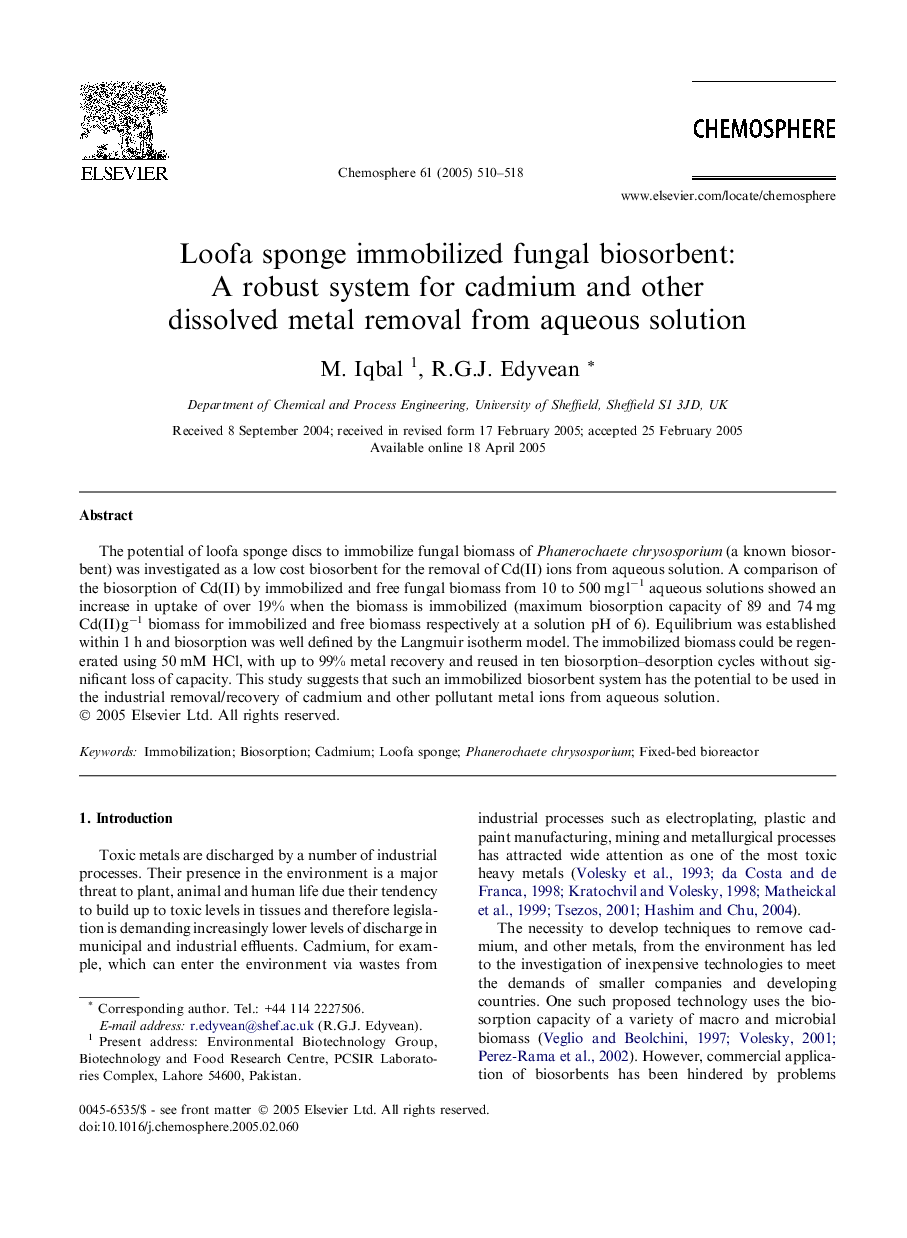| Article ID | Journal | Published Year | Pages | File Type |
|---|---|---|---|---|
| 9451377 | Chemosphere | 2005 | 9 Pages |
Abstract
The potential of loofa sponge discs to immobilize fungal biomass of Phanerochaete chrysosporium (a known biosorbent) was investigated as a low cost biosorbent for the removal of Cd(II) ions from aqueous solution. A comparison of the biosorption of Cd(II) by immobilized and free fungal biomass from 10 to 500 mg lâ1 aqueous solutions showed an increase in uptake of over 19% when the biomass is immobilized (maximum biosorption capacity of 89 and 74 mg Cd(II) gâ1 biomass for immobilized and free biomass respectively at a solution pH of 6). Equilibrium was established within 1 h and biosorption was well defined by the Langmuir isotherm model. The immobilized biomass could be regenerated using 50 mM HCl, with up to 99% metal recovery and reused in ten biosorption-desorption cycles without significant loss of capacity. This study suggests that such an immobilized biosorbent system has the potential to be used in the industrial removal/recovery of cadmium and other pollutant metal ions from aqueous solution.
Keywords
Related Topics
Life Sciences
Environmental Science
Environmental Chemistry
Authors
M. Iqbal, R.G.J. Edyvean,
